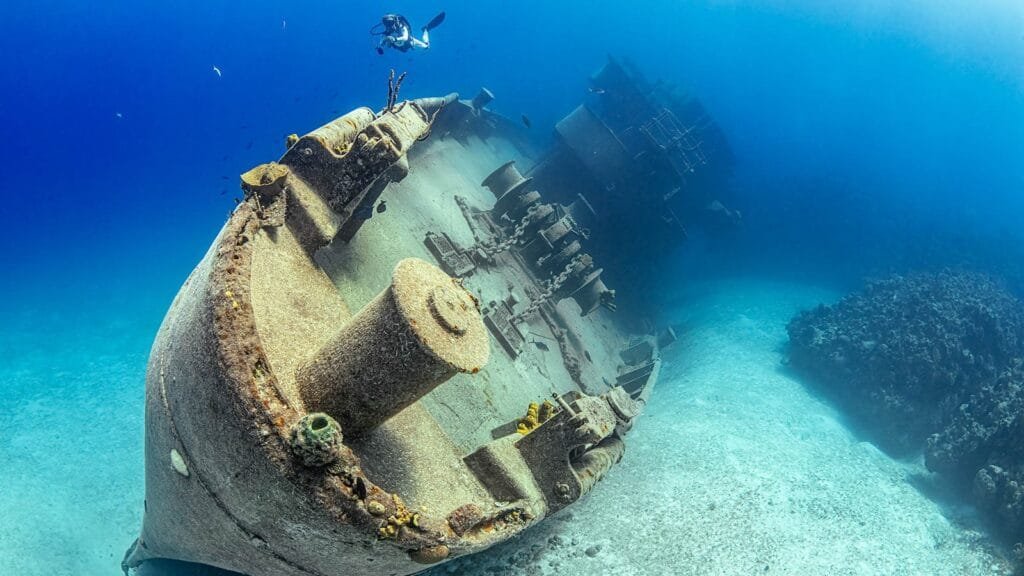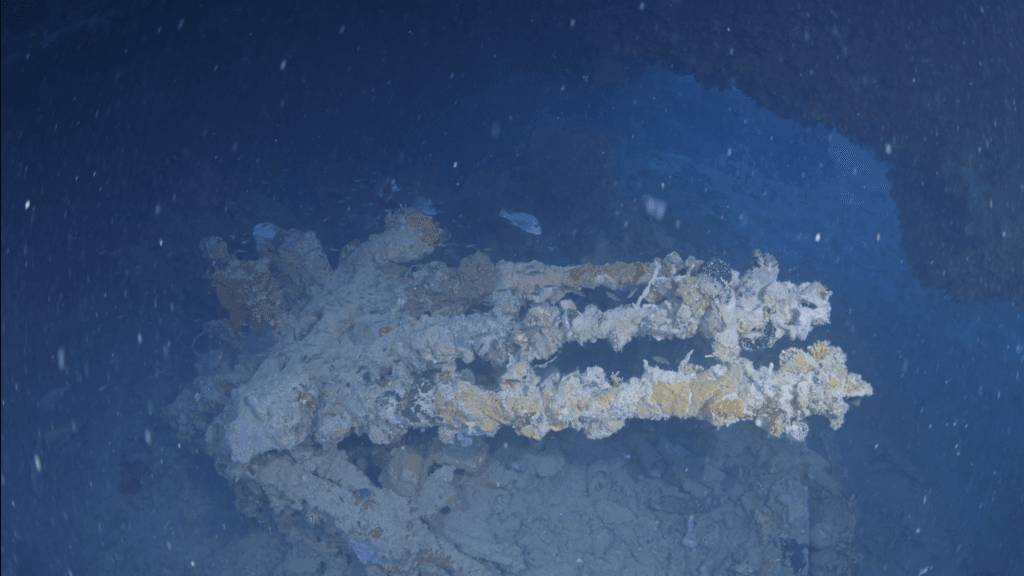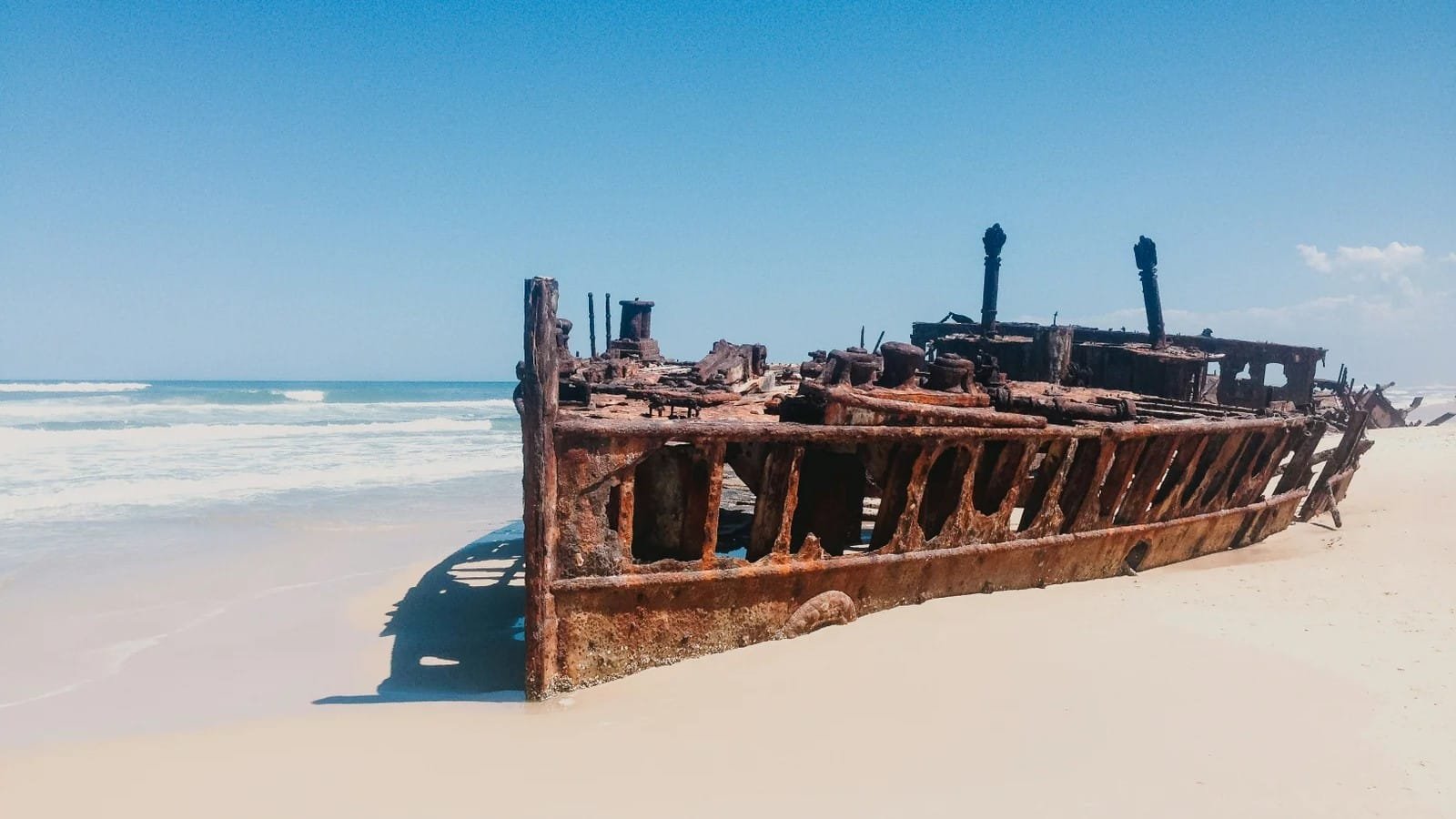
Introduction to Coron and its Sunken Boats
Coron, located in the northern part of Palawan, Philippines, stands as one of the premier diving destinations in the world. Renowned for its breathtaking marine biodiversity and crystal-clear waters, Coron offers an unparalleled underwater experience for both novice and experienced divers. The region boasts a rich tapestry of natural wonders, including vibrant coral reefs, diverse marine life, and unique geological formations. However, what truly sets Coron apart are its historical relics submerged beneath the waves.
The sunken boats of Coron are a testament to the area’s storied past, primarily reflecting events from World War II. In 1944, a fleet of Japanese warships met their fate in the waters off Coron, resulting in numerous ships becoming grave sites of maritime history. These vessels have since transformed into artificial reefs, attracting an array of marine life and creating thriving ecosystems. The allure of these wrecks captivates not only divers but also history enthusiasts, as each dive offers a unique glimpse into a bygone era.
Diving among the ruins of these sunken boats allows individuals to engage in an immersive exploration of history, where the remnants of war coexist with nature’s beauty. The vivid colors of coral and the movement of fish intermingling with the iron structures provide a striking contrast, making every dive an extraordinary adventure. Divers often comment on the surreal experience of exploring these underwater sites, where they can reflect on the lives lost and stories untold while observing the vibrant life that now inhabits these vessels.
In the context of eco-tourism, Coron’s sunken boats contribute significantly to local conservation efforts. They serve as important habitats that support marine biodiversity, all while offering a rich narrative that connects deeper with the local culture and history. As curious explorers embark on their dives, they are not only participating in a recreational activity but are also honoring the legacy of those who once traveled aboard these ships.
The Historical Background of the Sunken Boats
The sunken boats of Coron, Palawan, serve as poignant maritime relics of World War II, embodying the strategic shifts and turbulent events that shaped the region. During the early 1940s, Coron became a focal point in the Pacific theater due to its valuable positioning. Nestled in the Calamianes group of islands, this area provided vital access routes for naval operations and was pivotal for both Japanese and Allied forces.
The Japanese navy, aiming to consolidate its control over the Philippines, established numerous bases in Coron. This strategic location facilitated naval logistics and allowed for easy reconnaissance activities. As the war progressed, the islands became entrenched in fierce military confrontations. In 1944, U.S. forces launched Operation King II, targeting the Japanese fleet anchored in Coron Bay. This operation aimed to disrupt Japanese supply lines and cripple their naval capabilities. The resulting military engagements led to the destruction of several vessels, marking a significant turning point in the war.
It is estimated that there are over a dozen sunken boats of Coron submerged in the deep, each telling a story of valor, sacrifice, and the chaos of war. From transport ships to destroyers, these sunken vessels now serve as important dive sites, attracting divers and historians alike. Each shipwreck not only contributes to an understanding of the maritime history of the Philippines but also stands as a testament to the cultural and historical significance of the region during World War II. The exploration of these sunken boats offers valuable insights into the military strategies employed and the impact of the war on the local landscape, reminding us of the past’s enduring legacy.
The Sunken Ships: An Overview

Coron, Palawan is renowned for its remarkable collection of sunken ships that serve as poignant reminders of World War II’s maritime history. Among the most notable wrecks is the Irako, a Japanese refrigerated cargo ship that sank in September 1944. This well-preserved vessel is a magnet for divers, boasting rich marine life and fascinating relics.
Another significant wreck is the Kogyo Maru, a freighter that lies in approximately 30 meters of depth. It was sunk during the same campaign as Irako and offers a glimpse into its operational history, including its transportation of goods for the Japanese military. The Kogyo Maru is particularly captivating for divers, featuring various compartments accessible for exploration.
The Morazan Maru also deserves mention, being a Japanese cargo ship that met its fate in Coron Bay. The wreck is fairly intact and has become home to a myriad of marine life, making it a prime location for underwater photography.
One can also explore the Lusong Gunboat, a small war vessel that provides insight into naval warfare’s intricacies during the war era. The shallow positioning of this wreck makes it accessible for both novice and experienced divers.
The Akitsushima, a remarkable escort ship, is another highlight, known for its depth and well-preserved remnants. Similarly, the Okikawa Maru is notable for its size and length, attracting divers keen on exploring its vast structures.
Additionally, the Nanshin Maru and Kyokuzan Maru contribute to the rich tapestry of sunken vessels. The Teru Kaze Maru and the Olympia Maru round out this fascinating group of wrecks, each with their unique stories and conditions that tell of the strife of a bygone era.
Details of the Sinking: How and Why They Were Sunk
The history of the sunken boats in Coron, Palawan, is intricately woven into the fabric of World War II. The majority of these vessels were sunk during a series of military operations launched by American forces against the Japanese Imperial Navy, which was heavily fortified in the region. The strategic significance of Coron was paramount, as it served as a crucial harbor for the Japanese fleet, allowing them to resupply and recover. In 1944, the U.S. aimed to weaken Japanese naval capabilities, leading to the series of attacks that resulted in the sinking of multiple ships.
The most notable operation was the air raid conducted by American bombers on September 24, 1944. Intelligence reports had indicated that several Japanese navy vessels were docked in the bay. The pre-emptive strike aimed to cripple their ability to launch further assaults in the Pacific theater. Consequently, aircraft carriers such as the USS Essex supported this mission, unleashing a barrage of bombs that targeted the anchored fleet. The attack was highly successful, leading to the notable sinking of ships like the Kogyo Maru and the Akitsushima, which hold significant historical relevance.
In addition to direct assaults from the air, the areal approach yielded insights into the Japanese navy’s operational strategies. The sailors aboard these vessels were often caught in precarious circumstances, grappling with a defensive posture while trying to navigate the ensuing chaos. As a result, the sunken boats in Coron serve not only as diving sites for enthusiasts today but also as poignant reminders of the fierce naval warfare that defined this region. The preservation of these wrecks allows for an exploration of naval history while enhancing our understanding of the tactical decisions made during a critical juncture in World War II.
Depths of the Wrecks: Low and High Tide Conditions
The sunken boats of Coron, Palawan, offer a unique diving experience that is heavily influenced by the area’s tidal conditions. The depths at which these wrecks are submerged can vary significantly between low and high tide. Generally, these historical sites rest at depths ranging from approximately 10 to 30 meters, depending on the specific wreck. During low tide, certain wrecks may become partially exposed, with their upper sections visible just beneath the water’s surface. This phenomenon can present both challenges and opportunities for divers.
At high tide, the water level rises, often providing divers with better visibility and easier access to deeper parts of the wrecks. The submerged nature of these vessels can enhance the experience by allowing divers to explore more fully intact structures and their surrounding marine ecosystems. It is crucial for divers to be aware of the tidal schedules when planning their dive trips, as the variations in water levels can affect the overall accessibility of the wreck sites.
Moreover, local marine conditions, such as currents and visibility, can also fluctuate based on the tides. During low tide, stronger currents may be prevalent near some wrecks, making navigation more challenging. Conversely, high tide can create a more stable environment conducive to exploration. Understanding these dynamics is essential for ensuring safety and optimizing the diving experience. Consequently, divers are advised to monitor tide charts or consult with local guides to ensure they choose the best time for their underwater adventure.
Exploring the sunken ships of Coron not only offers an exciting dive into the depths but also a chance to connect with the region’s rich maritime history. The effects of tidal conditions are an integral part of this unique underwater experience, shaping the way divers interact with these historical treasures.
Diving Experience: What to Expect When Exploring the Wrecks

Diving in the surrounding waters, offers a unique opportunity to explore some of the most remarkable sunken boats of Coron in the world. The visibility in these areas can vary, typically ranging from 10 to 30 meters, depending on the season and weather conditions. Clear visibility enhances the experience, allowing divers to properly appreciate the historical significance of the wrecks and the surrounding aquatic life. The best time to visit is during the dry season, which extends from October to May, as this period generally provides the clearest water conditions.
The marine life around the wreck sites is diverse and vibrant, attracting a variety of species including colorful corals, schools of tropical fish, and sometimes even larger inhabitants like barracudas and sea turtles. The wrecks themselves serve as artificial reefs, fostering an environment rich with biodiversity. Divers will be captivated by the blend of history and nature that these submerged vessels provide, making it an unforgettable experience for both recreational and technical divers.
However, exploring the wrecks comes with its set of challenges. Divers should be aware of potential currents, which can vary significantly at different times of the day. It is advisable for novice divers to partake in guided tours led by experienced instructors. This ensures safety while allowing them to maximize their encounters with marine life and the various wrecks. More seasoned divers, on the other hand, may explore independently but should still adhere to safety protocols, including monitoring air supply and ensuring proper buoyancy control.
In essence, the diving experience in Coron is both thrilling and profound, making it imperative for divers to prepare adequately. Whether one is new to diving or highly experienced, understanding the local conditions, respecting the wrecks, and being aware of the marine environment will enhance the journey into this underwater history.
Marine Life at the Wreck Sites
The wreck sites in Coron, Palawan are not only a draw for history enthusiasts but also a vibrant ecosystem teeming with diverse marine life. The sunken boats, primarily Japanese warships from World War II, have transformed into artificial reefs over the decades, providing habitat and shelter for numerous species. The combination of structures and the surrounding coral formations creates a uniquely biodiverse environment.
Divers often encounter a myriad of fish species, including parrotfish, snappers, and batfish, which are drawn to the nooks and crannies of the wrecks. These submerged vessels offer protection and a breeding ground, fostering the growth of various fish populations. Notably, the wrecks serve as a refuge for both juvenile and adult fish alike. Additionally, larger pelagic species such as barracudas and jacks can frequently be seen patrolling the area, contributing to the dynamic marine ecosystem.
Coral growth is abundant in these submerged locations, with colorful hard and soft corals often claiming the wrecks as their own. Species such as brain corals and gorgonians thrive on these artificial reefs, creating a visually stunning underwater landscape. Sea turtles, which are considered an endangered species, can also be spotted here, attracted by the rich biodiversity. Their presence signifies a healthy ecosystem and the successful adaptation of marine life in these artificial habitats.
The interactions between the marine biodiversity and the wrecks underline the importance of preserving such sites. As sustainable diving practices gain prominence, the balance between diving tourism and marine conservation becomes vital. The wrecks of Coron not only serve as a glimpse into the past but also highlight the role of human interventions in supporting marine ecosystems. The Abyssal beauty of these underwater sites continues to captivate divers, showcasing a remarkable blend of history and marine biology.
Preservation Efforts and Impact
The sunken boats of Coron, Palawan, serve as significant historical and ecological monuments. As a popular diving destination, these wrecks draw numerous tourists, prompting a need for effective preservation efforts. Balancing tourism, the historical significance of the wrecks, and environmental conservation is a challenging yet necessary endeavor. Initiatives led by local government units, environmental organizations, and dive operators aim to ensure that these underwater sites remain intact for future generations while still supporting tourism.
To protect the sunken boats from damage, several measures have been implemented. Designated dive sites have been established, with guidelines that limit the number of divers allowed at each wreck. This approach helps reduce human-induced wear and tear on the sites, enabling both the marine life and historical artifacts to thrive. Furthermore, educational programs for divers are being conducted to raise awareness about the ecological significance of these wrecks and to promote responsible diving practices. Such efforts are crucial in minimizing environmental impact and safeguarding the integrity of these sites.
In conjunction with local regulations, continuous monitoring and assessment of the marine environment surrounding the wrecks are vital. Regular surveys allow for the identification of any detrimental effects stemming from tourism activities and provide data to inform further conservation strategies. Collaborations between local authorities and environmental organizations enhance these efforts, fostering a sense of community stewardship toward both the wrecks and the surrounding marine ecosystems.
Ultimately, successful preservation of the sunken boats hinges on cooperative engagement among stakeholders, including tourists, divers, and local communities. By recognizing the intrinsic value of these historical sites and the delicate balance between exploration and conservation, it is possible to protect these underwater treasures while sharing their stories with those who seek to explore them.
Conclusion: Sunken Boats of Coron

The exploration of the sunken boats in Coron, Palawan, is not merely a recreational activity for divers; it embodies a significant chapter in the local historical narrative. These submerged vessels serve as tangible remnants of World War II, reflecting the broader scope of maritime history and its profound impact on the region. Each wreck carries stories of bravery, loss, and survival, attracting historians and adventure seekers alike, all eager to uncover the rich past that these sunken ships represent.
From a cultural perspective, the legacy of these ships has been intricately woven into the identity of Coron’s community. The local population has embraced these sunken relics, often sharing tales that highlight the historical events associated with them. This connection to the past fosters a sense of pride among the residents, who view the wrecks not just as tourist attractions, but as an integral part of their heritage. Additionally, the sunken boats have sparked a renewed interest in preservation efforts, prompting discussions on how best to honor and protect these historical sites while balancing tourism and environmental sustainability.
Moreover, the sunken boats of Coron have cemented their place in the global diving community. The allure of exploring these underwater sites has attracted divers from all corners of the globe, significantly contributing to the local economy. The booming ecotourism industry not only provides jobs but also emphasizes the value of responsible diving practices. As divers navigate through the crystalline waters, they not only engage with the marine ecosystem but also become part of a narrative that transcends time. In conclusion, the legacy of Coron’s sunken boats is multidimensional, encapsulating historical significance, cultural pride, and a thriving tourism sector that continues to flourish today.

